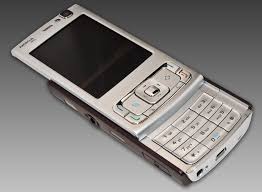
A faster digital network.

A 3G smart phone with all the features.
2G Edge had squeezed a lot out of an older network design but there was still a demand for data. The main goal for the 3G network was to provide mulit-media communications. This required faster data rates than 2G Edge could deliver. But, much of the technology had been tried out in the 2G environment. So an evolution to 3G with faster data rates was required.
Basic 3G technology is labelled as UMTS (Universal Mobile Telecommunications System). It predominantly operates at 2100 MHz (in UK) with paired frequencies, one for upload and one for download. This is FDD (Frequency Division Duplex). The available frequencies are sub-divided into 5MHz channels that will give data rates of 2Mbps without enhancement. 3G uses WCDMA (Wide Code Division Multiple Access) technology
One issue with 3G is that it has to run in parallel with 2G, especially for phone calls that are provided by the 2G network. Also in areas without 3F the network will switch tp the 2G network.
Once established further enhancements were made to the 3g network. HSPA technology was introduced to again provide greater data capacity and later HSPA+ technology. The latter was seen as the stepping stone to 4G networks.
2024 will see the end of 3G, the network is being switched off, largely overtaken by 4G. Those with 3G phone will be able to fall back onto the 2G network as this is not being switched off. Once switched off the 3G frequencies will be re-farmed to 4G.
© mobilephonetechnology.co.uk all rights reserved 2017-2025
